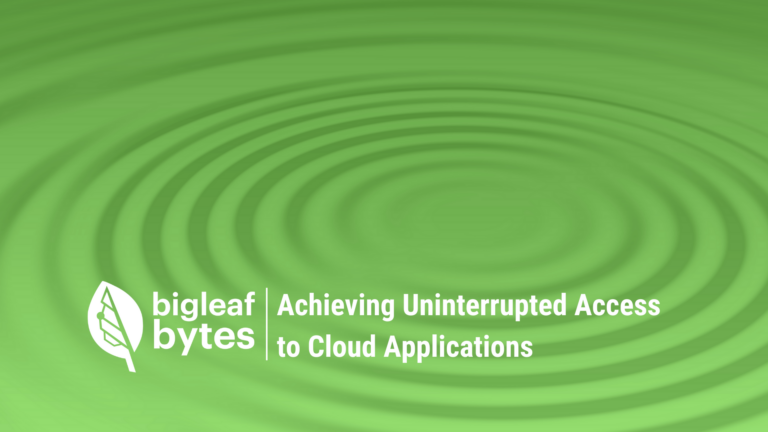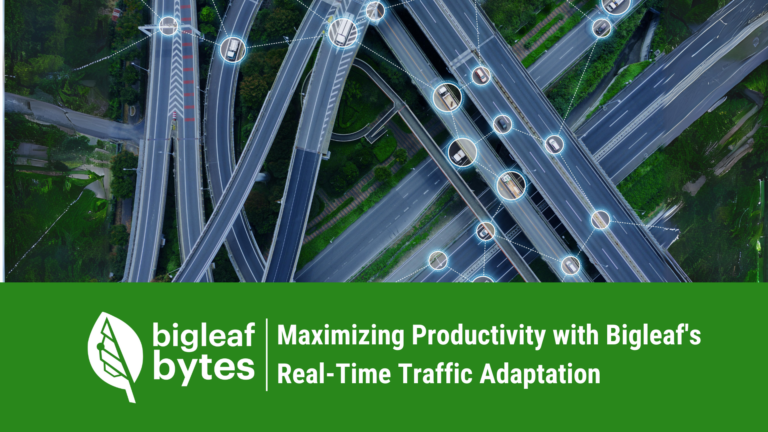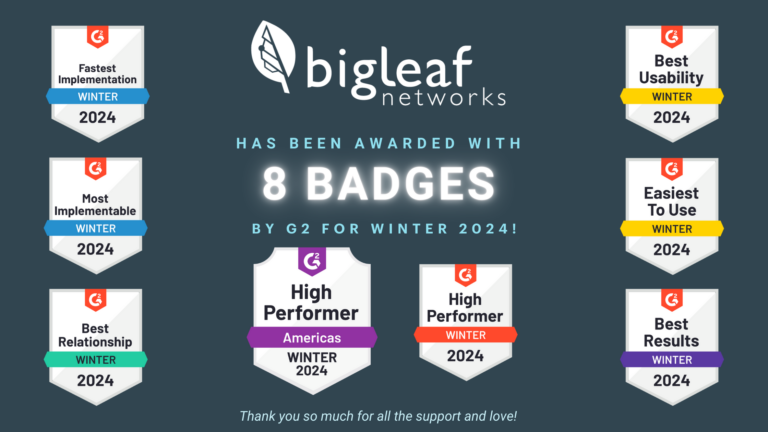But does it actually work, in real life, consistently?
This is Joel here, Founder and CEO of Bigleaf, and that’s a question I got tired of having to find answers for. Back when I came up with the concept for Bigleaf, I had grown sick of implementing fancy new load balancers and multi-wan routers for customers, just to be disappointed by all the caveats and false promises. Look at the marketing materials for those devices and you’ll see terms like “Seamless Failover”, and “Intelligent QoS”, yet those promises fall empty in almost all cases, except for specific lab environments that aren’t seen in the real world.
Bigleaf is different. We’re passionate about truly providing effective internet optimization. One of the features we use to do that is our patent-pending Dynamic QoS Prioritization. Our QoS implementation is different that others in a number of ways, which we’ll explore in this 2-part blog series. This first post addresses our higher-level philosophical thoughts about QoS, and the 2nd post will be more of a technical deep-dive.
Bigleaf QoS Concepts
Below are the 5 overarching concepts that go into our QoS Prioritization design.
Smart Sacrifice
 You will make sacrifices in your network implementation. Cost, reliability, speed, quality, relationships, and a number of other factors influence how you build your internet and cloud connectivity. At Bigleaf we believe that the cloud calls for a new priority ordering of sacrifices. You’re going to spend hundreds, thousands, or more each month on your cloud applications, and you need connectivity that’s worthy of those apps. We built the Bigleaf QoS system to sacrifice a tiny bit of network latency and cost, so that you can see huge gains in reliability and performance. You no longer have to settle for caveats and poor performance.
You will make sacrifices in your network implementation. Cost, reliability, speed, quality, relationships, and a number of other factors influence how you build your internet and cloud connectivity. At Bigleaf we believe that the cloud calls for a new priority ordering of sacrifices. You’re going to spend hundreds, thousands, or more each month on your cloud applications, and you need connectivity that’s worthy of those apps. We built the Bigleaf QoS system to sacrifice a tiny bit of network latency and cost, so that you can see huge gains in reliability and performance. You no longer have to settle for caveats and poor performance.
Internet Path Visibility
To provide effective QoS a network system needs to know about as much of the path as possible between the application and the users. As you move to Software Defined Networking (SDN) technology like Bigleaf, this is even more crucial. Networks can’t adapt to what they can’t see. Application developers are getting more creative about solving network problems via protocols like Multi-Path TCP, however only the network layer can provide QoS Prioritization, so it’s a crucial place to have visibility. Bigleaf extensively monitors the entire path that your traffic takes from your office all the way to our gateway clusters in the core of the internet. No traffic takes other paths, all of your traffic runs along the path that our monitoring traffic uses, so there are no hidden un-monitored “brownouts” or outages for lower priority applications.
Total Control
QoS doesn’t work unless you control all the traffic passing over a network path, in both directions, along the whole path. This is crucial. You can carefully configure QoS on your router or firewall, with lots of complex settings and rules, and not realize that it’s completely ineffective. And it’s really hard to test QoS properly, so you likely won’t even know until your co-workers complain of VoIP quality or other application issues.
 Why is this? Here’s why: There are 2 primary traffic protocols on the internet: TCP and UDP. TCP is like a phone conversation, it goes both ways, and if someone’s talking too fast you can tell them and they’ll slow down. UDP is like a TV show, one-way, if they’re talking too fast then you’re out of luck, the show is useless. The only way to provide effective QoS prioritization is to have total control of download and upload traffic, for all protocols, including UDP.
Why is this? Here’s why: There are 2 primary traffic protocols on the internet: TCP and UDP. TCP is like a phone conversation, it goes both ways, and if someone’s talking too fast you can tell them and they’ll slow down. UDP is like a TV show, one-way, if they’re talking too fast then you’re out of luck, the show is useless. The only way to provide effective QoS prioritization is to have total control of download and upload traffic, for all protocols, including UDP.
An on-site load balancer, router, or firewall has no control of inbound UDP traffic (yes, their marketing literature is misleading). Some very expensive on-site devices will attempt to control inbound TCP traffic via hacks of the protocol’s return traffic, but this is only part of the traffic flow on the circuit, there’s still uncontrolled UDP traffic that will destroy QoS. It’s like you’re trying to have a phone conversation, but the TV is on really loud so you can’t hear and there’s no way to turn it down.
Bigleaf controls all traffic, TCP, UDP, and every other IP protocol, end-to-end between your office and our gateway clusters. Total Control for real QoS.
A Creative and Evolving Ruleset
Complexity ruins many great intentions. Do you have time to manage QoS rules all day long, or do you need to deal with business-critical work? Yes, it’s fun to geek out at times and tweak knobs and settings, but that fun quickly turns in to a hassle (or outright failure) with typical complex QoS implementations.
We take a different approach: plug and play ease. Our standard ruleset is creative, correctly handling new applications automatically in most cases. And as the ruleset evolves those changes propagate automatically to all sites, so you benefit continually from improvements. If you do need to get geeky to accommodate some esoteric application we can manage that via custom per-site rules, but our standard rules meet almost everyone’s needs well.
Real-time Adaptation
 QoS only works when network devices at each end know how fast the network path is. This is a little-known fact, but it’s crucial for effective QoS. Network devices have to manage traffic flowing into a circuit so that the circuit doesn’t become saturated: full of traffic. If circuit saturation occurs then the devices trying to implement QoS are effectively doing nothing, their rules are no longer controlling the network prioritization. Yet almost all network QoS devices are completely naive of changing circuit bandwidth.
QoS only works when network devices at each end know how fast the network path is. This is a little-known fact, but it’s crucial for effective QoS. Network devices have to manage traffic flowing into a circuit so that the circuit doesn’t become saturated: full of traffic. If circuit saturation occurs then the devices trying to implement QoS are effectively doing nothing, their rules are no longer controlling the network prioritization. Yet almost all network QoS devices are completely naive of changing circuit bandwidth.
When using broadband circuits, or even SLA-backed circuits like T1s or fiber, the speed of the path between your office and the remote destination is often variable. Speed can be affected by issues along the whole path, last-mile, middle-mile and peering problems. Your internet QoS is ineffective if it’s based on a statically set speed.
Our patent-pending QoS implementation is Dynamic – it adapts to changing circuit bandwidths in real time to ensure that high-priority traffic like VoIP and other real-time applications experience true prioritization across the full path from your office to our gateway clusters in the core of the internet.
You Need It All
Without all of the concepts above, correctly implemented, and carefully managed, QoS across the internet is impossible. With Bigleaf’s Dynamic QoS you get the best possible experience for your VoIP and Cloud traffic in a simple-to-use service. Please Sign Up for service, or Contact Us with questions.
Check out Part 2 where we dive into some technical details about the above topics.
Feature and Last image by MattysFlicks







